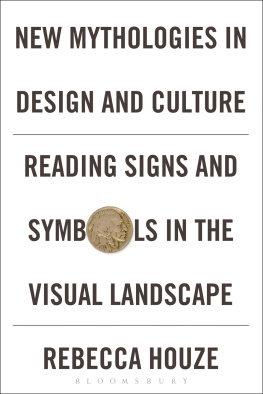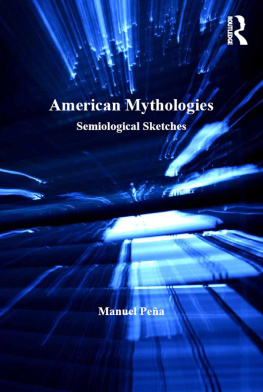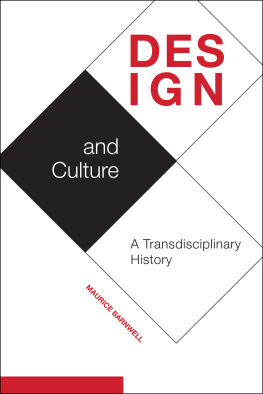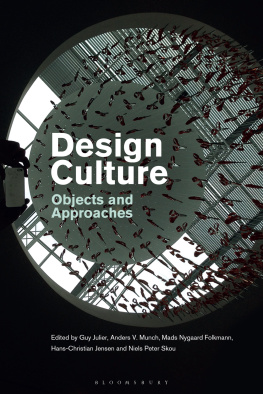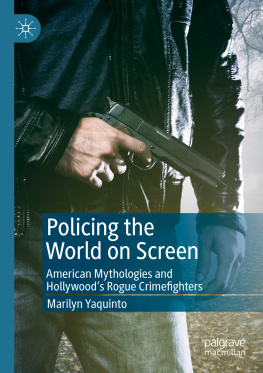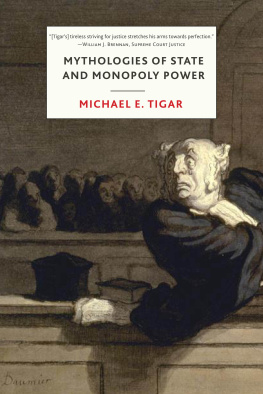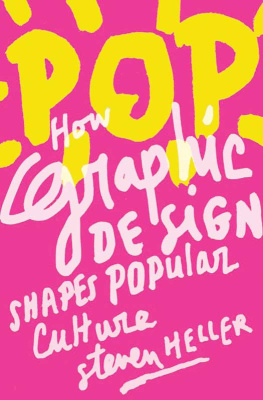Houze - New Mythologies in Design and Culture
Here you can read online Houze - New Mythologies in Design and Culture full text of the book (entire story) in english for free. Download pdf and epub, get meaning, cover and reviews about this ebook. year: 2016, publisher: Bloomsbury UK, genre: Politics. Description of the work, (preface) as well as reviews are available. Best literature library LitArk.com created for fans of good reading and offers a wide selection of genres:
Romance novel
Science fiction
Adventure
Detective
Science
History
Home and family
Prose
Art
Politics
Computer
Non-fiction
Religion
Business
Children
Humor
Choose a favorite category and find really read worthwhile books. Enjoy immersion in the world of imagination, feel the emotions of the characters or learn something new for yourself, make an fascinating discovery.
New Mythologies in Design and Culture: summary, description and annotation
We offer to read an annotation, description, summary or preface (depends on what the author of the book "New Mythologies in Design and Culture" wrote himself). If you haven't found the necessary information about the book — write in the comments, we will try to find it.
Houze: author's other books
Who wrote New Mythologies in Design and Culture? Find out the surname, the name of the author of the book and a list of all author's works by series.
New Mythologies in Design and Culture — read online for free the complete book (whole text) full work
Below is the text of the book, divided by pages. System saving the place of the last page read, allows you to conveniently read the book "New Mythologies in Design and Culture" online for free, without having to search again every time where you left off. Put a bookmark, and you can go to the page where you finished reading at any time.
Font size:
Interval:
Bookmark:

New
Mythologies
in Design and
Culture
For Gabriel and Lucian
New
Mythologies
in Design and
Culture
Reading Signs and Symbols
in the Visual Landscape
REBECCA HOUZE
Bloomsbury Academic
An imprint of Bloomsbury Publishing Plc

CONTENTS
Plates
Figures
There are many individuals who deserve special thanks for their encouragement and contribution to this project. First and foremost, I am grateful to my students and colleagues at Northern Illinois University, who have given me the opportunity to examine the visual landscape from diverse points of view, especially Janie Wilson-Cook, Brooke Stover, Tara Quell, Jamie Jacobs, Stuart Henn, Chrysoula Gardiakos, and the many graduates of NIUs program in Visual Communication. Their insights into design have challenged me to think more critically and imaginatively about fascinating topicsfrom IKEA to video games. I am also indebted to the community of scholars active in the Design History Society, Design Studies Forum, and the Gender Studies Program at the University of Notre Dame, especially Pamela Robertson Wojcik and Barbara Green, who have invited me to present these ideas over the years. Some of the essays included here I first read as papers at: the 2013 Design History Society conference on sport; the conferences on food and childhood, hosted by the Gender Studies Program at the University of Notre Dame in 2012 and 2014; and the 2015 annual meeting of The Space Between: Literature and Culture, 191445. I am also grateful to Professor Yu Zhongwen, and his colleagues at Wuhan University of Technology, who invited me to present a series of lectures on these topics to their design students in China.
I thank the editorial staff of Bloomsbury, as well as the former Berg Publishers, who so enthusiastically encouraged this project, and who have worked with me patiently to refine and clarify the ideas in these chapters, especially Tristan Palmer, Simon Cowell, Simon Longman, Rebecca Barden, and Abbie Sharman. I owe the opportunity to work on this book to Grace Lees-Maffei, who invited me years ago to co-edit with her The Design History Reader , a project through which I was first introduced to these dynamic publishers. My outside readers provided valuable suggestions and insights that likewise have helped me to shape my arguments.
I am grateful to the many individuals and institutions who generously granted permission to use the images included, especially Gabriel OLeary, Lucian OLeary, and Margaret OLeary, who created some of them. Yolanda B. Houze deserves special thanks for her editorial assistance, as does Janie Wilson-Cook for her technical expertise in helping to prepare the images for publication. Many thanks are due as well to Northern Illinois Universitys Division of Research and Innovation Partnerships, College of Visual and Performing Arts, and School of Art and Design, each of which provided financial support for this project. The interpretations of signs and symbols that follow are exclusively my own and are in no way endorsed by the companies represented, including those who have given permission to use images of their brands and products.
The boyhood interests of Gabriel and Lucian OLeary, to whom this book is dedicated, inspired this project. Their many hours playing with Lego, Minecraft, and the Nintendo DS, their fervent interest in sports attire, as well as the many bedtime stories weve read together over the years, are at the heart of my endeavor to better understand and interpret these popular myths of the everyday. Most importantly I thank my creative and intellectual partner, collaborator, and frequent co-author, Peter OLeary, for sharing with me his keen understanding of myth. Peter deserves special credit for his insights into the ominous nature of television, the menacing cloud, Freuds uncanny, Michael Jordan, and William Faulkner.
What are signs and symbols in the visual landscape? And how do we read them? A sign seen from the interstate highway communicates quickly. Its simplified iconic form tells us that we may replenish our hungry bodies and thirsty cars at the next exit. A gatewaya pair of golden archesbeckons to us from the distance. Not far beyond we recognize a large bulls-eyeconcentric circles in red and white. The unmistakable symbol tells us that if we continue moving in that direction we will surely hit the target; that is, we will find everything we need to buy. These signs shout to us loudly from a distance. Others we can hold in our hands, and near our eyes and ears, where they flicker with images and whisper suggestively. The smooth, cool, glass touch screen is alive with tantalizing sounds and sights that enable us to interact both with others and with the endless stream of information which it provides. These signs and symbols are not only practical tools, designed to provide us with new knowledge or to satisfy our physical needs, but are also seductive invitations to play. They are central to our imaginative lives and to the construction of our identities.
As we move through the day we continuously navigate the built environment. In doing so, we encounter many images and objects, which are both strange and familiar. They are part of a shared language, a visual vocabulary of the collective imagination. Our clothing, the spaces we inhabit, the tools we use for work and for leisure, our vehicles of transportation, and even the food we eat, are all designed, but the individual experience of this visual landscape is idiosyncratic and often accidental. Though clothing, cars, or kitchens may have been designed with particular uses in mind, their meanings shift from one context to another.
The experience of the visual landscape as something fragmented and diverse may be peculiar to modernity, first having emerged in Europe during the early modern period. It gathered steam with the industrialization of the nineteenth century, when novel forms of architecture and furnishings, But our experience of the postmodern visual landscape today is not necessarily one of chaos and confusion. By contrast, we combine and piece together disparate elements of that landscape into a comprehensible language of forms. The signs we encounter resonate through culture, history, politics, and social change.
This book was inspired, as its title suggests, by the work of literary critic and semiotician Roland Barthes, whose memorable observations of French popular culture in the 1950s were first published in the French literary magazine, Les Lettres Nouvelles . In 1957, Barthes collected his short essays in the volume Mythologies , for which he wrote the theoretical concluding chapter, Myth Today. In this, he examined the way in which socially constructed notions become naturalized through a linguistic process he described as myth. Barthes wrote: Myth is a type of speech. More specifically, it is depoliticized speech, of which the ideological underpinnings are obscured. In his well-known analysis of a photograph on the cover of Paris Match , depicting a young black boy in uniform, saluting, Barthes demonstrated that the image on one level signified the soldiers patriotism, but on another reassured its white bourgeois audience of the validity of French colonialism in Africa, at a time of increasing political unrest.
Barthess essays, in general, dwell on seeming trivia, such as the meaning of wine and milk, laundry detergents, travel guides, professional wrestling, and striptease, but Myth Today is more pointedly political. The essays in New Mythologies in Design and Culture , likewise, seek to demonstrate the political and ideological underpinnings of popular myths of daily life at the beginning of the twenty-first century, and they emerge, like Barthess impressions, from a feeling of impatience with the naturalness which common sense, the press, and the arts continually invoke to dress up a reality which, though the one we live in, is nonetheless quite historical.
Font size:
Interval:
Bookmark:
Similar books «New Mythologies in Design and Culture»
Look at similar books to New Mythologies in Design and Culture. We have selected literature similar in name and meaning in the hope of providing readers with more options to find new, interesting, not yet read works.
Discussion, reviews of the book New Mythologies in Design and Culture and just readers' own opinions. Leave your comments, write what you think about the work, its meaning or the main characters. Specify what exactly you liked and what you didn't like, and why you think so.

